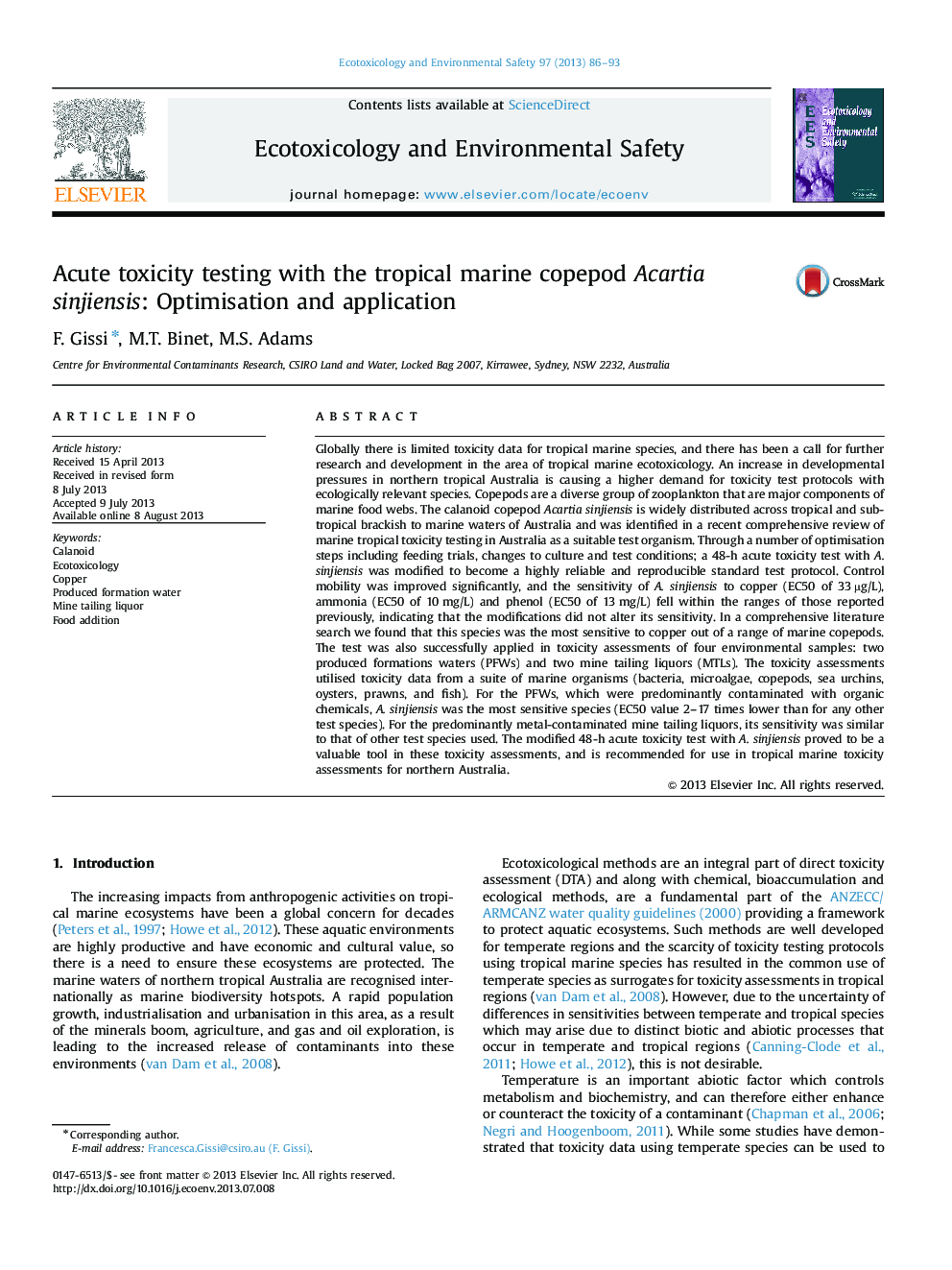| Article ID | Journal | Published Year | Pages | File Type |
|---|---|---|---|---|
| 4420305 | Ecotoxicology and Environmental Safety | 2013 | 8 Pages |
•Acute 48-h immobilisation bioassay with Acartia sinjiensis is robust and reliable.•A. sinjiensis is more sensitive to copper than other copepods reported.•The copepod test measured toxicity in four complex effluents.•Out of a suite of six bioassays the copepod test was the most sensitive.•Recommended for use in ecotoxicological assessments in tropical environments.
Globally there is limited toxicity data for tropical marine species, and there has been a call for further research and development in the area of tropical marine ecotoxicology. An increase in developmental pressures in northern tropical Australia is causing a higher demand for toxicity test protocols with ecologically relevant species. Copepods are a diverse group of zooplankton that are major components of marine food webs. The calanoid copepod Acartia sinjiensis is widely distributed across tropical and sub-tropical brackish to marine waters of Australia and was identified in a recent comprehensive review of marine tropical toxicity testing in Australia as a suitable test organism. Through a number of optimisation steps including feeding trials, changes to culture and test conditions; a 48-h acute toxicity test with A. sinjiensis was modified to become a highly reliable and reproducible standard test protocol. Control mobility was improved significantly, and the sensitivity of A. sinjiensis to copper (EC50 of 33 µg/L), ammonia (EC50 of 10 mg/L) and phenol (EC50 of 13 mg/L) fell within the ranges of those reported previously, indicating that the modifications did not alter its sensitivity. In a comprehensive literature search we found that this species was the most sensitive to copper out of a range of marine copepods. The test was also successfully applied in toxicity assessments of four environmental samples: two produced formations waters (PFWs) and two mine tailing liquors (MTLs). The toxicity assessments utilised toxicity data from a suite of marine organisms (bacteria, microalgae, copepods, sea urchins, oysters, prawns, and fish). For the PFWs, which were predominantly contaminated with organic chemicals, A. sinjiensis was the most sensitive species (EC50 value 2–17 times lower than for any other test species). For the predominantly metal-contaminated mine tailing liquors, its sensitivity was similar to that of other test species used. The modified 48-h acute toxicity test with A. sinjiensis proved to be a valuable tool in these toxicity assessments, and is recommended for use in tropical marine toxicity assessments for northern Australia.
